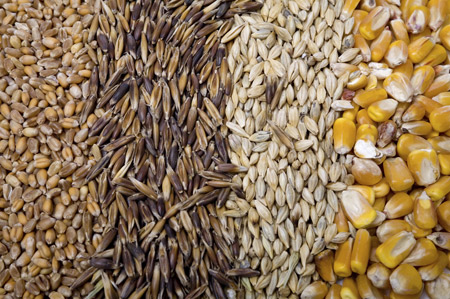 (Agrimoney) – Just as one South American strike fades, the prospect of more rear up.
(Agrimoney) – Just as one South American strike fades, the prospect of more rear up.
The number of roadblocks on Brazilian highways mounted by truckers’ protesting at higher fuel prices had dwindled to seven as of yesterday, from more than 100 a week ago.
That allowed the number of trucks reaching Paranagua, an important soybean-exporting port, to reach 500, allowing silos to refill.
However, there is now talk of a strike in Argentina, where producer group are threatening to stop temporarily selling soybeans, to raise awareness over the plight of the country’s agriculture industry, saddled with large export taxes, ahead of elections in October,
Argentine truckers have also planned a strike in the middle of the month.
‘Political gesture’
However, the news failed to keep alive the last session’s recovery in soybean prices, in part over doubts that the threatened Argentine action represents such a threat to the country’s exports.
“If there is a commercial strike for a limited period in Argentina, it would probably be more of a political gesture than anything that would markedly affect exports of soybeans, meal, soyoil,” said Terry Reilly at Futures International.
Brian Henry at Benson Quinn Commodities said: “It doesn’t seem like the producer would have the needed leverage” to force a government climbdown.
Furthermore, it is not as if South American protest is driving importers to buy their soybeans in the US.
“China continues to actively seek South American soybean supplies,” Mr Henry said.
Less waiting
Latest US export data continue to show a seasonal slowdown in its soybean shipments, as focus switches to South American supplies.
And this when there is concern anyway over growth in import demand anyway, notably by China.
“The vessel line-up is slowly building up for Paranagua but the waiting period of around a month is nothing compared to 60-90 days in recent years for the month of March,” Mr Reilly said.
Certainly, there was not enough reason for investors to inject more risk premium to prices, or for further short-covering by speculators who have already returned to a net long position in Chicago soybean futures and options.
Soybeans for May fell 0.4% to $10.08 ¼ a bushel as of 09:30 UK time (03:30 Chicago time), dropping back below their 50-day moving average.
‘Improving basis’
One area where Chinese demand, or at least rumour of it, has been a factor is in the wheat market, with importers said to be on the prowl for US hard red spring wheat.
CHS Hedging highlighted that in the last session “Minneapolis spring wheat led the wheat markets higher, turning around midsession on improving basis levels in both domestic and export markets and rumours of Chinese business”.
Still, Minneapolis wheat on Wednesday lost buoyancy, giving back 0.7% to stand at $5.66 ¾ a bushel for May delivery, and condemning other wheat markets to losses too.
Chicago soft red winter wheat for May shed 0.8% to $5.02 a bushel.
Data later
And with wheat lower, fellow grain corn felt pressure too, with little hope that data later on US ethanol dynamics will provide much support.
The trade is “bracing for further slippage in the weekly grind on the heels of negative blend margins, increasing ethanol stocks, up 20% since Christmas, and flat-to-negative ethanol plant margins,” Richard Feltes at Chicago-based RJ O’Brien said.
He also flagged “aggressive Ukraine corn offerings” on the world export market.
Corn for May stood 0.3% lower at $3.90 a bushel.
Palm prospects
Elsewhere, palm oil dropped in Kuala Lumpur too, by 0.5% to 2,366 ringgit a tonne, as investors continue to analyse comments from a key industry conference in the Malaysian capital.
Oil World’s Thomas Mielke provided some comfort for bulls by saying that world palm oil output this year will grow in 2015 at its slowest pace in 13 years, with Malaysia’s producing seen rising by 200,000 tonnes to 19.8m tonnes, and Indonesia’s adding 2.1m tonnes to 32.9m tonnes.
However, James Fry at LMC International forecast that palm oil prices will average 2,260 ringgit a tonne in the first half of 2015, and may then drop to six-year lows, without an improvement in biofuel demand.
“Until now, many do not realise how much high crude prices have underpinned the palm sector,” Mr Fry said.




